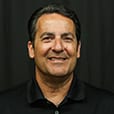

SALT LAKE CITY — Seven races in 22 days in Utah’s capital city. That’s how we closed out the Monster Energy AMA Supercross season.
The series went 85 days between races — from the Bike Week event at Daytona Int’l Speedway to the first of seven races at Rice-Eccles Stadium on May 31.
The plan sounded simple, but considering the state of the world during the pandemic, it really wasn’t. What would it be like to fly while wearing a mask? What would be open in Salt Lake City? How much do you pack for a 27-day trip?
Once arriving in Salt Lake City, we were quarantined for 48 hours before doing anything. Then, we had to take a COVID-19 test conducted by folks wearing hazmat suits.
The test was like going upside down in a pool and having water rush up your nose. Fortunately, it didn’t take long. Then, we had to lay low for another 48 hours while we waited for the test results.
Production meetings took place on Tuesdays and Saturdays with races on Wednesdays and Sundays. That meant four times per week we had to go through a temperature check in order to enter Rice-Eccles Stadium on the campus of the University of Utah.
Each time we crossed our fingers as they raised the thermometer to our forehead because failing the temperature check meant a mandatory 72-hour quarantine. A second failed test would result in 14 days of isolation.
On Rice-Eccles Stadium property, masks were worn by everyone. It didn’t matter, you had to keep your mask on and stay six feet apart. We also had to stay in our own zones. The TV crew stayed isolated in the TV compound and teams didn’t mingle in each other’s pits.
Our broadcast booth was divided in half with a massive floor-to-ceiling curtain to keep Ricky Carmichael and I socially distanced. We each had our own complete set of monitors and a cameraman. There was also one audio person. Ricky and I never appeared on camera standing next to each other. Once the five of us arrived on site, we went to the booth and never left until the show ended.
It was a very unusual way to do a broadcast. Not sitting together made it difficult for Carmichael and I to have casual conversations on air. I would have to wave sheets of paper around the curtain to get his attention if I needed to take the broadcast in a new direction.
It also made it very difficult to talk with the racers to get insight, details and stories to pass along to the viewers. Obviously, text messages and cell phone calls helped us connect to the racers. Most conversations took place in hotel lobbies, on mountain bike trails and in grocery stores.
There was no media center and press conferences took place using the Zoom platform.
Unfortunately, no fans were allowed into the races, although a few would sit outside the stadium and watch the broadcast while enjoying the engine sounds emanating from inside.
While some racers and teams chose to stay in houses in Park City, the majority of racers, teams, officials and all television personnel were set up in one of three hotels in downtown Salt Lake City.
Since everybody was there for the duration, hotel rooms became apartments. Guys were buying George Foreman grills and hot plates to cook in their rooms. I woke up one morning to the smell of bacon cooking next door. It was like my old college dorm at Chico State.
Fortunately, Utah, which is known as the State of Sport, offers an incredible amount of outdoor activities. It was a good paring with the Supercross crowd, as many utilized off days for mountain biking, hiking, off-roading, motorcycling, fishing and rental car excursions to the Bonneville Salt Flats.
It was impressive to see how the Dirt Works track crew quickly moved the dirt around between events to provide a different race track design for each round. It was a monumental task, which led to the hardworking NBC Sports crew having to reposition cameras and microphones to capture all of the new angles.
The weather added to the challenge. The first weekend saw temperatures in the 90s, which were followed by heavy rain, snow, hail, cold temperatures and more scorching sun.
Including race teams, building staff, Feld Entertainment staff, track workers, medical staff, the Dirt Works crew and our NBC team, 685 people were involved in the undertaking. That is less than a quarter of the typical number of people involved.
This all happened because everyone was committed to completing the season and crowning three very deserving champions. It was an experience I will never forget.
